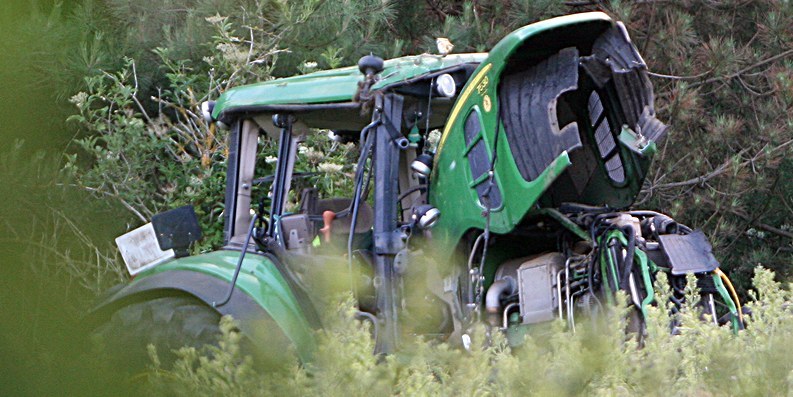A sheriff has ruled that a retired farm worker who died following an accident in Perthshire could have survived had he been wearing a seatbelt.
Following a fatal accident inquiry at Perth Sheriff Court, Sheriff Michael Fletcher suggested Neil Abercromby’s death may have been avoided if he had been properly restrained.
The 70-year-old Forfar man sustained severe chest injuries and internal trauma when the tractor he was driving tumbled down a hill as he was spreading seed in a field near Glencarse on July 5 last year.
Pathologist Dr David Sadler of Dundee University had told the inquiry that the injuries were consistent with Mr Abercromby having been crushed by the John Deere tractor as it rolled over him.
”He was ejected from the cab and the cab had rolled over, striking him,” he said. ”The injuries, both external and internal, comply with the events described.
”Certainly ejection is the enemy here because he was subjected to the full force of the vehicle.”
In his written findings, released on Tuesday, Sheriff Fletcher has ruled that there were two defects in the system of working that contributed to Mr Abercromby’s death.
One was the failure of the labourer to wear a seatbelt and the other was the failure of his employers to insist on the use of a seatbelt while driving the tractor in a field, particularly those with steep slopes.
These determinations echoed the views given by specialist inspector from the Health and Safety Executive Richard Wilson during the two-day inquiry, which was held in May this year.
He had carried out the initial inspection of both the accident site and the vehicle in a bid to determine how the events had occurred.
The mechanical expert concluded that the tractor overturned on a section of hill with a one in three incline and that the use of a seatbelt may have ensured Mr Abercromby’s survival.
Mr Wilson added: ”My own belief is that if you have a vehicle that is designed to have a protective structure, particularly tractors which are prone to rolling over, you need some form of restraint device to make sure the person remains within the protective structure, because that is what it is designed to do.
”Although I am not qualified to say whether or not Mr Abercromby would still have survived, the cabin was relatively intact and he would have stayed within it.
”Obviously during the roll-over he would have been thrown about a lot and may have sustained injuries that way.”
Sheriff Fletcher accepted, however, that not wearing seatbelts was common practice for those driving tractors on a regular basis as it caused some ”difficulty and inconvenience” to drivers.
He also accepted that, while the use of a restraint device may well have prevented the death of Mr Abercromby, he may still have suffered some injury as he was only secured around the middle of his body.
”Unfortunately, however, accidents happen when one is least expecting them and the stakes are often extremely high, so that the only safe course is to make sure all drivers of tractors fitted with seatbelts wear them,” the sheriff added
”Failure to do so may well mean there is no second chance.
”In my opinion all employers of persons who drive tractors should make every effort to ensure their employees use the seatbelt provided.
”The relatively small amount of inconvenience which might be caused by the belt pales into insignificance when an accident like the one which happened to Mr Abercromby occurs.”
